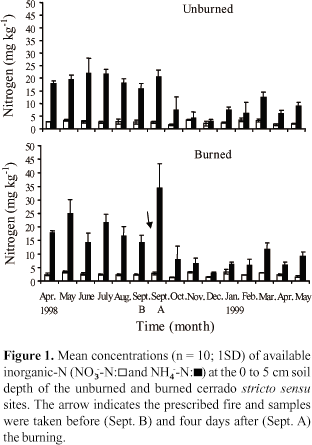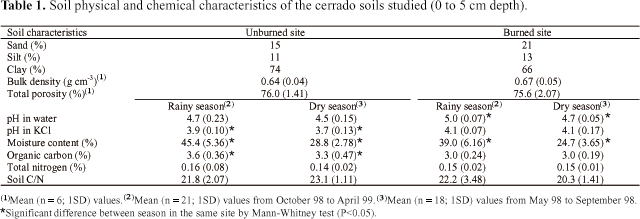The objective of this work was to study the effects of fire on net N mineralization and soil microbial biomass in burned and unburned cerrado stricto sensu sites. The study was carried out from April 1998 to April 2000. The pH values were significantly higher in the burned site while soil moisture content was significantly higher in the unburned site (P<0.05). The soil C/N ratio was 22/1 and the available NO3-N ranged between 1.5 and 2.8 mg kg-¹ dry weight. However, the NH4-N concentration ranged between 3 and 34 mg kg-1 dry weight in the burned site and between 3 and 22 mg kg-1 dry weight in the unburned site. The NH4-N increased after fire, but no significant changes were observed for NO3-N (P<0.05). The NO3-N accumulation occurred in short periods during the rainy season. The rates of net N mineralization increased during the rainy season while reductions in soil microbial biomass were observed at both sites. This suggested that the peak in microbial activities occurred with the first rain events, with an initial net immobilization followed by net mineralization. Both sites presented the same pattern for mineralization/immobilization, however, the amount of inorganic-N cycled annually in unburned site was 14.7 kg ha-1 per year while the burned site presented only 3.8 kg ha-¹ of inorganic-N, one year after the burning.
nitrogen mineralization; nitrification; inorganic compounds; burning




